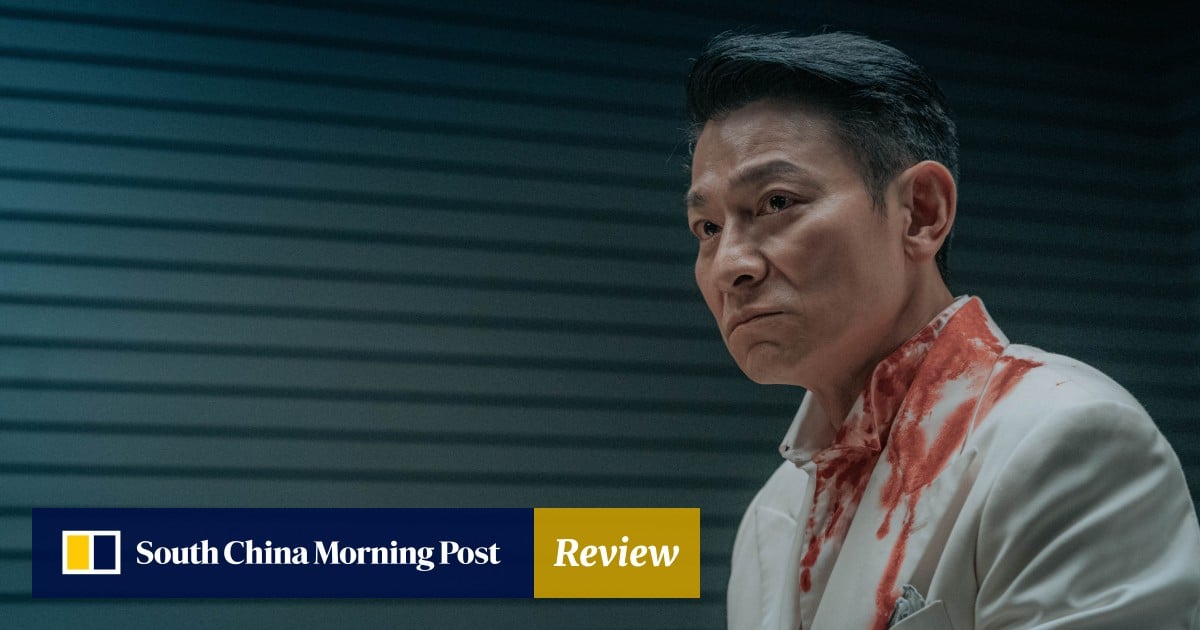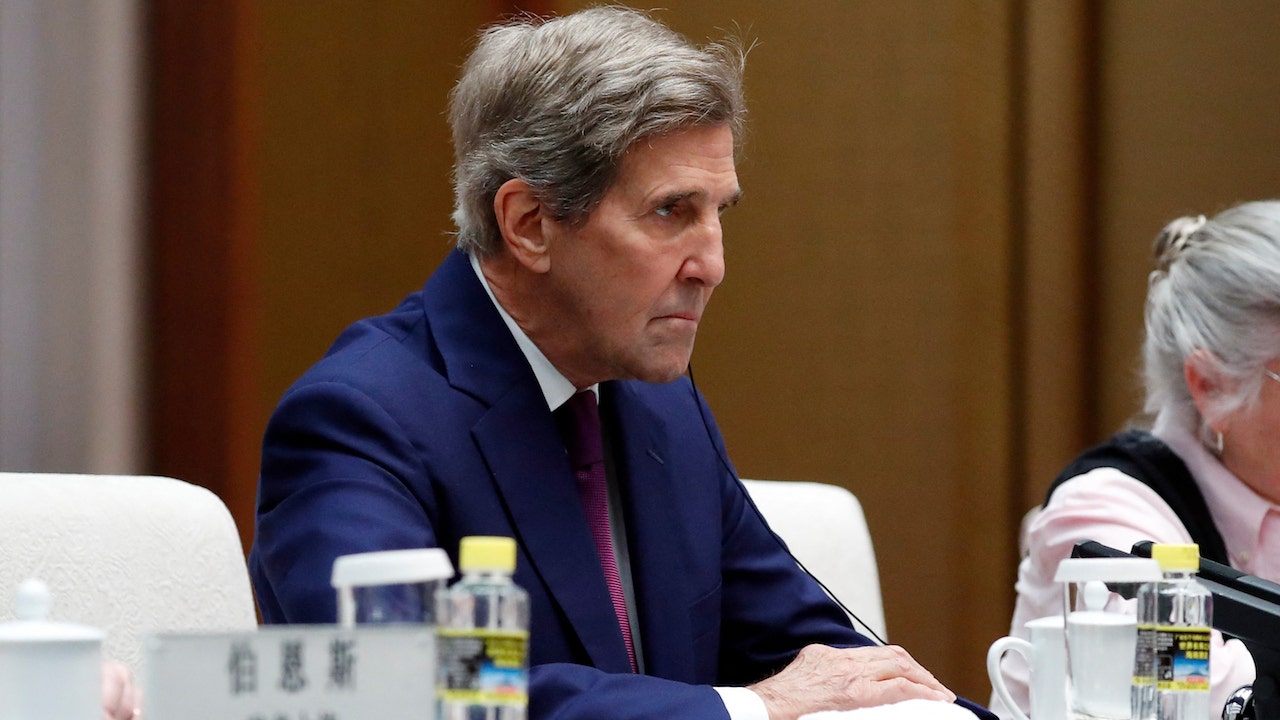Movie Reviews
Black Dog: Chinese director Guan Hu makes Cannes debut

2.5/5 stars
Black Dog begins with all the trappings of a revenge Western. Set in a godforsaken town where bad guys roam around with impunity, it revolves around a reticent man returning home after a decade-long absence to confront his sworn enemies.
It also seems to have everything in place for a political allegory. Juxtaposing images of crumbling tenements with incessant radio news bulletins about the Beijing Olympics, the story, set in 2008, could offer commentary about the clash of reality and dreams in 21st century China.
As it turns out, Guan Hu’s film is neither. From the big bang of its first half-hour, Black Dog is slowly reduced to a whimper, as what was set up to be a hard-boiled genre film turns into a sentimental relationship drama about a wayward man’s attempt to connect with his family, friends, foes and his new four-legged buddy.
Settling into his long-abandoned home, his past returns to haunt him in the form of the local butcher, who accused Lang of having caused his nephew’s death.
But the bad guy in town is Yao (Jia Zhangke), the chain-smoking leader of a bunch of “dog management officers” who capture strays and steal pets in order to resell them elsewhere for a profit.
Lang joins Yao to earn some hard cash, only to find his humanity flickering back to life when he forms a bond with a raging, rabies-stricken hound. This inspires him to reconcile with his adversaries, his ailing zoo-master father and his younger self.
While there’s nothing wrong with Guan’s decision to steer a fatalistic tale towards a happy ending, the change of tone does Peng few favours, as he is forced to reprise the kind of gawky man-child role he has been typecast in for just too long.

Meanwhile, the flood of positive energy in the second half of the film renders its remarkable set design evoking doom and gloom irrelevant. The same can be said even of apparently important characters: Dong Liya’s circus acrobat, for example, is left with nothing to do as the prospect of forming a relationship with Lang evaporates.
The canines are cute, though – and for some, perhaps, that is Black Dog’s main draw.

Movie Reviews
Fancy Dance (2024) – Movie Review

Fancy Dance, 2024.
Directed by Erica Tremblay.
Starring Lily Gladstone, Isabel Deroy-Olson, Ryan Begay, Shea Whigham, Audrey Wasilewski, Crystle Lightning, Tamara Podemski, Patrice Fisher, Ryan RedCorn, Lillian Faye Thomas, Casey Camp-Horinek, Tyler Tipton, Dennis Newman, Trey Munden, Arianne Martin, Blayne Allen, Michael Rowe, Hauli Gray, Blake Blair, Kylie Dirtseller, and Cory Hart.
SYNOPSIS:
Following her sister’s disappearance, a Native American hustler kidnaps her niece from the child’s white grandparents and sets out for the state powwow in hopes of keeping what is left of their family intact.

Infuriatingly, displacement is common among minorities, especially natives. Co-writer/director Erica Tremblay’s Fancy Dance tells such a tale, highlighting the distinction between the effort, or lack thereof, child protective services, local authorities, and even FBI agents funnel into cases under certain circumstances. If it involves white relatives, authorities will feel more pressed to investigate and likely be more prominent in the outcome.
This is also a complicated story, so that’s not to absolve Lily Gladstone’s Seneca-Cayuga nation clan member Jax, who does sneak her 13-year-old niece Roki (Isabel Deroy-Olson) away from the white grandparents Frank and Nancy (Shea Whigham and Audrey Wasilewski) she has been forced under the guardianship of following yet another disappearance from her troubled mother (longer than usual and still missing) and the powers that be believing a slight criminal record has made the aunt unfit to take over those responsibilities. Considering Jax has normalized stealing and theft to Roki and does have a history of selling drugs, there is a small amount of concern, but nothing that should kickstart uprooting someone away from their people, home, and culture.

The inquisitive, good-natured Roki is also excited for the annual powwow not just for the traditional symbolic dancing but also because she believes that, regardless of where her mom is now, she will be there, and they will be reunited during a ceremonial dance. What exactly the relationship is like between daughter and mother feels underexplored and isn’t exactly spoken about, but it’s also apparent that there is a darker truth, with Jax urging her local reservation cup brother JJ (Ryan Begay) to convince authorities with the more pull that the situation this serious this time, or to break some ground in the case himself.
Working together with screenwriter Miciana Alise, Erica Tremblay also portrays the white grandparents, particularly Nancy, as more misguided than outright villainous, which goes a long way in further grounding the narrative. They don’t understand how important the powwow is to Roki (who has already been practicing her moves and has a cute jacket picked out as part of her outfit), claiming they must get her settled into this suburban home hours away from the reservation. Frank also seems to incorrectly assume that it would be wise to keep Roki away from that “mess,” referring to nearby drug dealers, prostitution, and the alarming amount of missing person cases that could be related to some shady surrounding white men. Meanwhile, Nancy cluelessly believes ballet lessons will replace something deeply entrenched in Roki’s identity and sense of self.

This is important to note since, when Jax essentially kidnaps Roki to figure things out (she is along for the ride since they will be going to the powwow), it’s even easier to be on her side and to feel that instant frustration when all types of authorities instantly jump to assist the white grandfather. And even if Jax is not necessarily the most positive influence in some areas, there are also tender moments among the thieving and squatting in rich people’s homes, such as managing Roki through her first period. In many respects, Jax feels like a friend to Roki, who hasn’t yet embraced the fact that it’s time to be a second mom.
The chemistry between Lily Gladstone and Isabel Deroy-Olson is airtight and sweetly expresses a mimicry bond but convincingly conveys their trust-breaking, as the latter becomes wiser to the former not telling the full truth about her missing mother. Their wonderful performances continuously overcome the shakier, more overblown story beats (such as something involving a firearm). Furthermore, Lily Gladstone is tremendous, maneuvering between steely toughness, desperation, and vulnerability. Between avoiding authorities on this road trip, piecing together clues about her sister’s disappearance, and pestering her brother JJ to investigate some of those revelations, it brings out a nuanced, emotionally layered performance.

Even if Fancy Dance falls into some melodramatic trappings elsewhere, the resolution of the mystery aspect is realistically bleak. It makes the case for not just an unfortunate element of reservation life but also what continues to happen because it’s seemingly unimportant to local authorities. It’s not all gloom, though, as the final moving scene is earned, fits the characters’ journey, and celebrates the culture.
Flickering Myth Rating – Film: ★ ★ ★ / Movie: ★ ★ ★ ★
Robert Kojder is a member of the Chicago Film Critics Association and the Critics Choice Association. He is also the Flickering Myth Reviews Editor. Check here for new reviews, follow my Twitter or Letterboxd, or email me at MetalGearSolid719@gmail.com
https://www.youtube.com/watch?v=embed/playlist
Movie Reviews
‘This is CineMMA’ movie reviews: Episode archives

On MMA Fighting’s This Is CineMMA podcast, the movie review crew of Alexander K. Lee, Jed Meshew, and E. Casey Leydon take a look at films that span the combat sports spectrum. From tales of UFC legends, to MMA stars like Conor McGregor butting heads with award-winning actors, to good old-fashioned street fight flicks, we leave no stone unturned in our ongoing search for the greatest mixed martial arts movie of all-time.
Check out every episode of This is CineMMA here, on YouTube, and in podcast form on Apple Podcasts, Google Podcasts, Spotify, Stitcher, or wherever else you find your favorite podcasts.
Movie Reviews
Movie Review – Inside Out 2
Back in 2015, Disney and Pixar introduced us to 11-year-old Riley and the squabbling emotions inside her prepubescent head. To make a long story short, Joy (Amy Poehler) tried to retain dominance over the girl, but Sadness (Phyllis Smith) kept creeping her way in. The struggle led to both emotions getting kicked out of Riley’s conscience. Following an adventure through the girl’s psyche, both emotions made their way back and Joy realized that she had to share Riley with other emotions, even unpleasant ones, in order for her to get the most out of life. In this new movie, Riley’s five core emotions want to retain dominance over the girl, but new emotions creep their way in. This leads to a struggle where the old emotions get kicked out of Riley’s conscience. They’ll have to go on an adventure through the girl’s psyche to make their way back and hopefully obliterate the new emotions. Or maybe they’ll learn to share and the message will be exactly the same as in the first movie.
For the record, I wasn’t a big fan of the first movie. Don’t get me wrong, I thought it was okay, and it kept the streak of at-least-passable Pixar alive until “Lightyear” two years ago. But setting up this elaborate world of personified emotions led to countless questions that the movie wasn’t prepared to answer, and without answering those questions, it didn’t make sense. Sometimes the nonsense played to its adventage, like a deus ex machina toward the end involving stackable crushes. Other times it hurt the movie, like leaving me wondering if these characters even had lives that were at stake, and what might happen to Riley if those lives were lost. The new movie raises more new questions than it answers, but this time I’m a little more comfortable knowing that the movie is prepared to answer some questions and not others.
For the new movie, Riley (Kensington Tallman) is going to hockey camp with her best friends Grace (Grace Lu) and Bree (Sumayyah Nuriddin-Green). Joy is looking forward to guiding her, along with core emotions Sadness, Anger (Lewis Black), Disgust (Liza Lapira), and Fear (Tony Hale). But Riley hits puberty the night before the camp, ushering in new emotions Anxiety (Maya Hawke), Envy (Ayo Edebiri), Embarrassment (Paul Walter Hauser), and Ennui (Adele Exarchopoulos). Anxiety proves useful in a few social situations, but clashes with Joy when the latter wants Riley to stay loyal to her old friends, as opposed to endearing herself to the more popular Val (Lilimar). The new emotions banish the old emotions to the back of Riley’s mind until she can be completely reworked.
My problem with the movie, other than that the story progression is pretty much the same as the first movie, is once again at the literal level. I can understand a kid with conflicting emotions, but what happens when a kid is missing five of them, as is the case here? If Riley is being controlled by the four new emotions, what’s making her competent at hockey? And why do the filmmakers think that Anxiety doesn’t manifest until puberty? What are young kids famous for saying on car trips? “Arewethereyet? Arewethereyet?” That’s Anxiety, guys.
Of course, just as the “Inside Out” movies teach audiences to take the bad with the good, I must remember to take the good with the bad. And there is a lot of good here. The animation is as colorful and delightful as ever, the emotional moments had me feeling for the characters, and the humor consistently hits. My favorite gags involve cartoon characters stuck in the back of Riley’s mind. Video game character Lance (Yong Yea) is another helpful crush of Riley’s, Pouchy (James Austin Johnson) is a little too happy to provide explosives, and Bloofy (Ron Funches) is a fourth-wall breaker with no fourth wall to break (you can practically hear the Disney writers saying, “Take that, Nickelodeon!”). These characters, more than the emotions, were the highlight of this passable Pixar affair.
Grade: B-
“Inside Out 2” is rated PG for some thematic elements. Its running time is 96 minutes.
Contact Bob Garver at rrg251@nyu.edu.
-

 Movie Reviews1 week ago
Movie Reviews1 week ago‘Darkest Miriam’ Review: Britt Lower in a Marvel of a Drama About a Young Librarian’s Loves and Fears
-

 Politics1 week ago
Politics1 week agoNewson, Dem leaders try to negotiate Prop 47 reform off California ballots, as GOP wants to let voters decide
-

 Politics1 week ago
Politics1 week agoGun group vows to 'defend' Trump's concealed carry license after conviction
-

 World1 week ago
World1 week ago‘Bloody policies’: Bodies of 11 refugees and migrants recovered off Libya
-

 Politics1 week ago
Politics1 week agoShould Trump have confidence in his lawyers? Legal experts weigh in
-

 Politics7 days ago
Politics7 days agoGOP releases Jan. 6 clip of Pelosi saying 'I take responsibility' as she discussed National Guard absence
-

 World1 week ago
World1 week agoOrban party loses major support in Hungary's EU election
-

 News1 week ago
News1 week agoTrump to escalate blame on trial judge Juan Merchan if sentenced to prison














